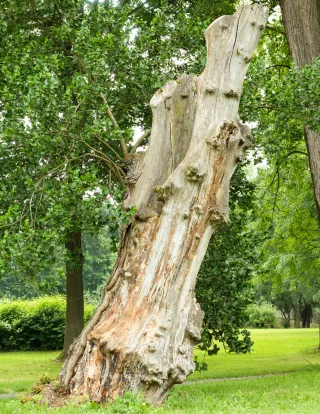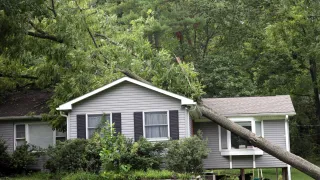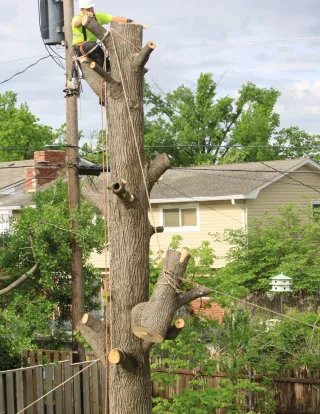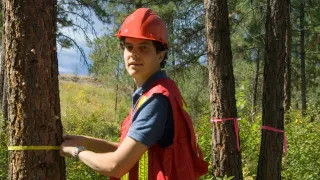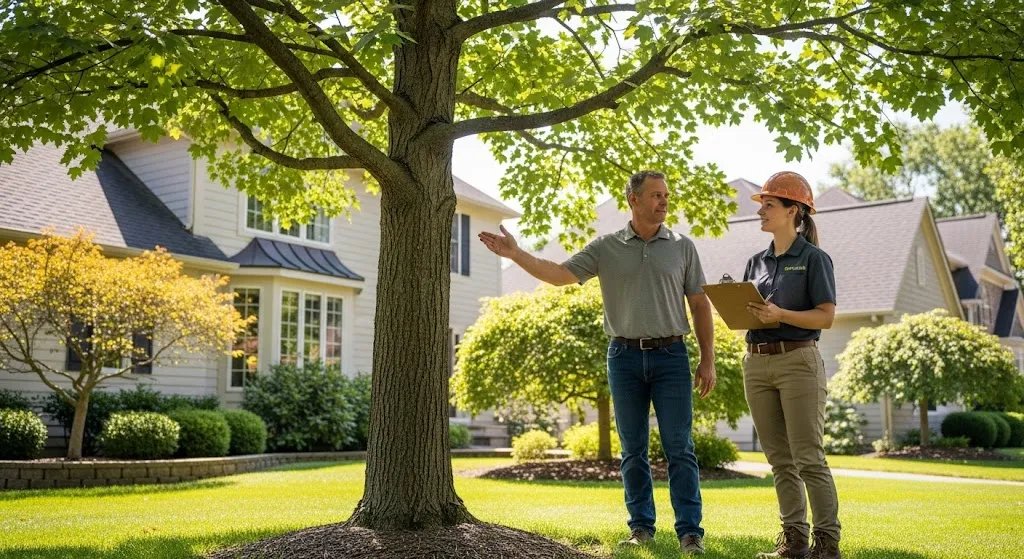
The Best Time to Remove a Tree (And Why It's Not Always Urgent)
People ask me about tree removal timing for different reasons – some think there's a "best" season for the tree's sake (there isn't, for trees that need to come down), others want to time it for cost or convenience, and some think everything's an emergency. The reality is that tree removal timing depends more on safety, logistics, and your goals than on what's best for a tree that's already marked for removal.
Understanding when removal makes sense – and when it doesn't – can save you money and help you make better decisions for your property.
Safety Trumps Everything
If a tree poses immediate danger, timing doesn't matter – it needs to come down. Leaning trees after storms, trees with large dead branches over structures, or trees showing signs of imminent failure don't get to wait for convenient scheduling.
But here's what I see a lot: people treating non-urgent situations like emergencies. A dead tree that's been dead for two years and isn't threatening anything doesn't suddenly need emergency removal just because someone finally noticed it.
True emergencies are situations where delay increases danger to people or property. Most tree removals aren't actually emergencies, even when they feel urgent to the homeowner.
Dormant Season Advantages
Late fall through early spring (November-March) is often the best time for planned tree removals, for several practical reasons:
Equipment access is easier when grass isn't actively growing and won't be damaged as severely by heavy equipment.
Weather is more predictable – you're less likely to have work delayed by sudden storms or extreme heat.
Tree services are less busy – better scheduling, more careful work, sometimes better pricing.
Cleanup is simpler – no leaves to deal with, and debris is easier to manage.
Less disruption to landscaping – dormant plants handle construction traffic better than actively growing ones.
Cost Considerations
Demand affects pricing, and tree removal demand varies significantly by season:
Peak season (storm season and fall cleanup time) means higher prices and limited availability.
Off-season scheduling often means better rates and more flexible timing.
Emergency calls cost more regardless of season – you're paying for immediate response and often working around other scheduled jobs.
Multiple tree jobs can be scheduled more efficiently in off-peak times, potentially saving money through economies of scale.
Species and Timing
For trees that are being removed for reasons other than safety, species-specific considerations might matter:
Messy species like sweet gums or mulberries might be better removed before they drop fruit or seed pods all over your equipment access routes.
Trees that attract pests might be better removed during times when those pests are less active.
But for dead or dangerous trees, species doesn't matter – they need to come out regardless of what time of year it is.
Property Planning Considerations
Coordinate with other landscape projects – if you're planning major yard work, tree removal timing can be part of a larger strategy.
Consider replanting plans – if you want to plant replacement trees, removal timing might affect when and where you can plant.
Think about access routes – removing trees when ground conditions are good for heavy equipment prevents unnecessary damage to your property.
Plan around your schedule – tree removal is disruptive, so timing it when you can be present (if you want to) or away (if you prefer) makes sense.
Weather and Seasonal Factors
Tennessee weather patterns affect tree removal logistics:
Summer heat makes tree work more difficult and potentially dangerous for crews.
Storm seasons bring higher demand and potential delays due to emergency calls.
Winter weather can delay removal work, but the window of good working conditions is usually predictable.
Ground conditions matter for equipment access – wet seasons can make access difficult while dry seasons are usually better for minimizing property damage.
When Waiting Makes Sense
Non-hazardous dead trees can often wait for convenient timing without becoming more dangerous.
Trees marked for removal due to construction projects can be timed to coordinate with other work.
Trees being removed for aesthetic reasons or property planning can wait for optimal timing and pricing.
Trees in difficult access situations might benefit from waiting for better weather or seasonal access conditions.
When Waiting Doesn't Make Sense
Progressive structural problems – trees with issues that are getting worse need to come down before they fail on their own terms.
Disease or pest issues that could spread to other trees benefit from prompt removal.
Construction timelines that require tree removal by specific dates for other work to proceed.
Insurance or liability concerns where delay increases risk or potential costs.
Planning vs. Reacting
Planned removal gives you control over timing, cost, and logistics. You can schedule work when it's convenient and cost-effective.
Reactive removal – waiting until trees become emergencies – costs more and gives you fewer options.
Regular assessment helps you identify trees that will need removal while you still have time to plan the work strategically.
Professional evaluation can help distinguish between trees that need immediate attention and those that can wait for optimal timing.
Logistics and Access
Equipment access affects removal complexity and cost. Large trees in tight spaces or difficult terrain might need special equipment or techniques regardless of timing.
Power line clearance requirements might dictate timing – utility companies often have seasonal preferences for tree work near lines.
Permit requirements in some areas might affect timing – check local regulations before planning major tree removals.
Neighbor notification – if removal could affect shared property boundaries or access, timing coordination might be helpful.
Replacement Planning
If you plan to replant, removal timing can be coordinated with optimal planting seasons for replacement trees.
Stump grinding can be done immediately or delayed, depending on your replanting timeline and other factors.
Site preparation for new plantings might be easier to coordinate with removal work if planned together.
Soil improvement – removal often provides opportunities to improve soil conditions before replanting.
Economic Factors
Bundling multiple trees for removal can be more cost-effective than individual removals spread over time.
Off-season pricing can provide significant savings for non-urgent removals.
Insurance considerations – removing dangerous trees proactively might prevent claims and liability issues.
Property value impacts – both positive and negative – might influence timing decisions for removals.
Environmental Considerations
Wildlife habitat – if trees provide important wildlife resources, timing removal for seasons when impact is minimized might be worthwhile.
Nesting season restrictions – some areas have restrictions on tree removal during bird nesting seasons.
Soil protection – timing removal to minimize soil compaction and damage can be important for remaining landscape health.
The Reality Check
Most homeowners overestimate the urgency of tree removal needs. Unless there's immediate safety risk, you usually have time to plan removal strategically.
Good planning saves money and gets better results than emergency response.
Professional assessment helps distinguish between situations that need immediate attention and those that can wait for optimal timing.
Removing trees isn't usually seasonal for the tree's sake – a tree that needs to come down will be just as dead whether you remove it in January or July.
The Bottom Line
The best time to remove a tree depends on your specific situation – safety concerns, access issues, cost considerations, and coordination with other projects all matter more than abstract ideas about seasonal timing.
For dangerous trees, the best time is now. For everything else, you probably have time to plan the work strategically for better results and cost savings.
Professional evaluation can help you distinguish between urgent and non-urgent situations, and help you plan removal timing that works for your priorities and budget.
If you're trying to figure out whether tree removal is urgent or can wait for better timing, give us a call or text at (423) 443-4533. We can help assess the real timeline for your situation and discuss options for timing that work for your priorities and circumstances.


